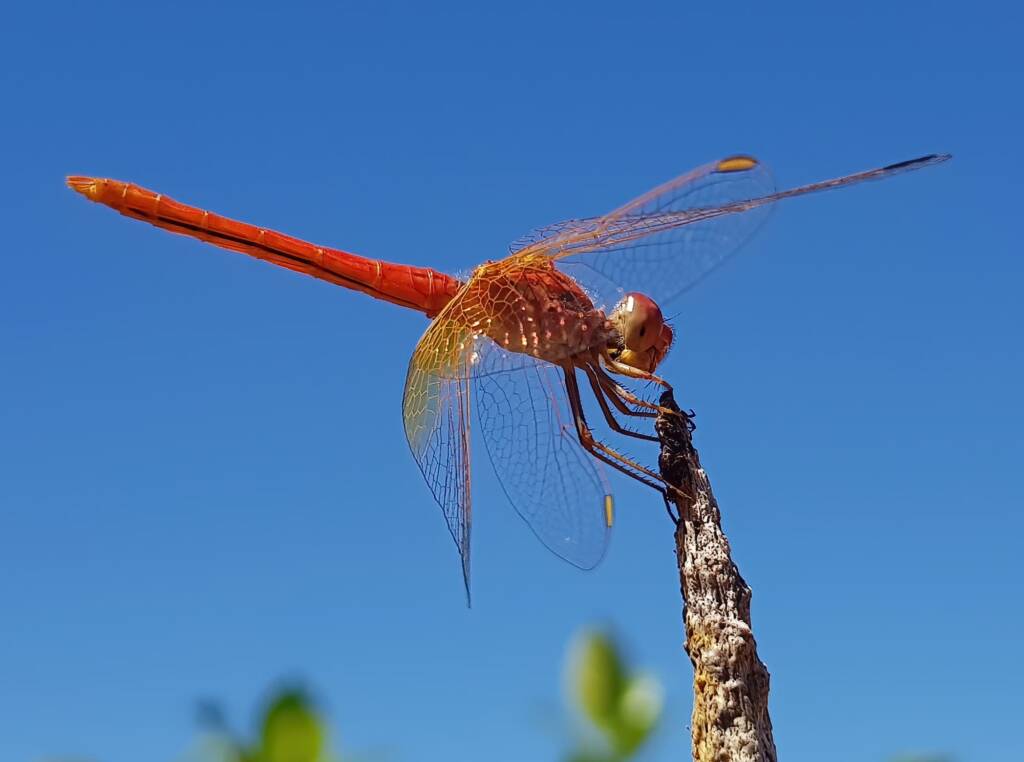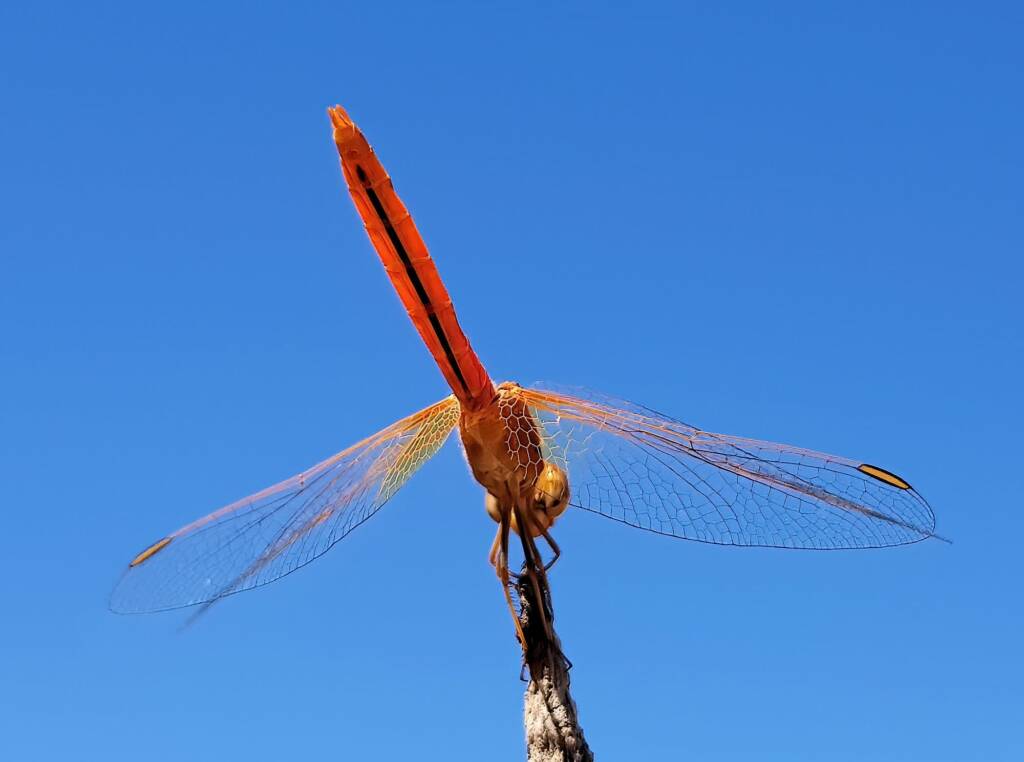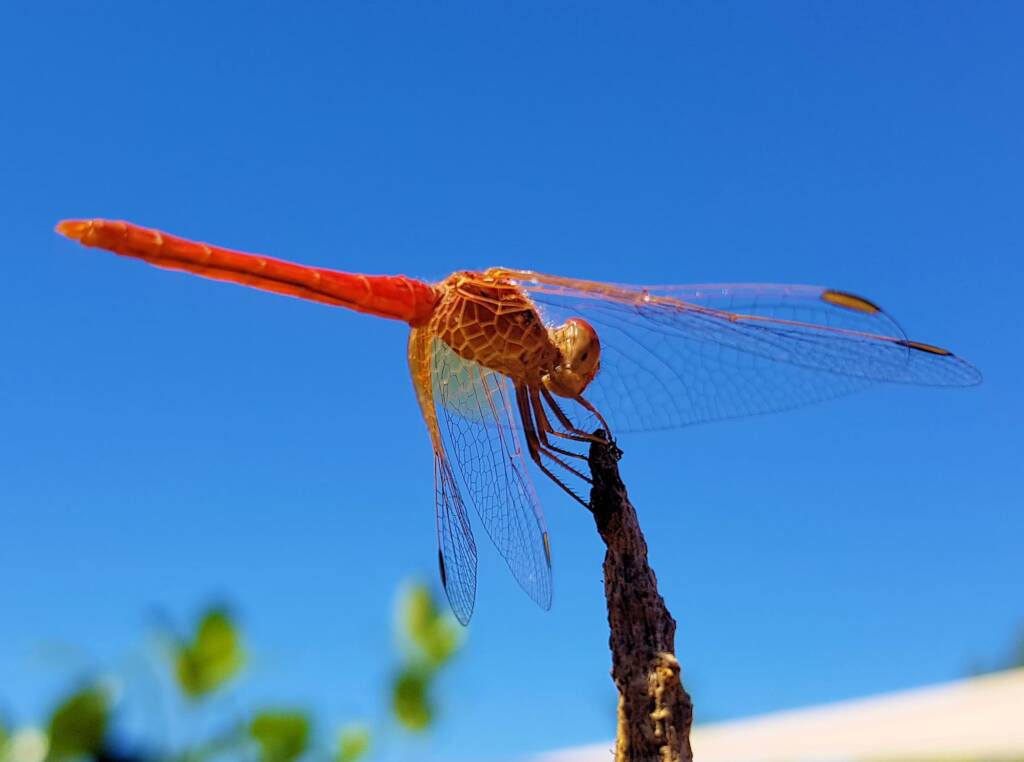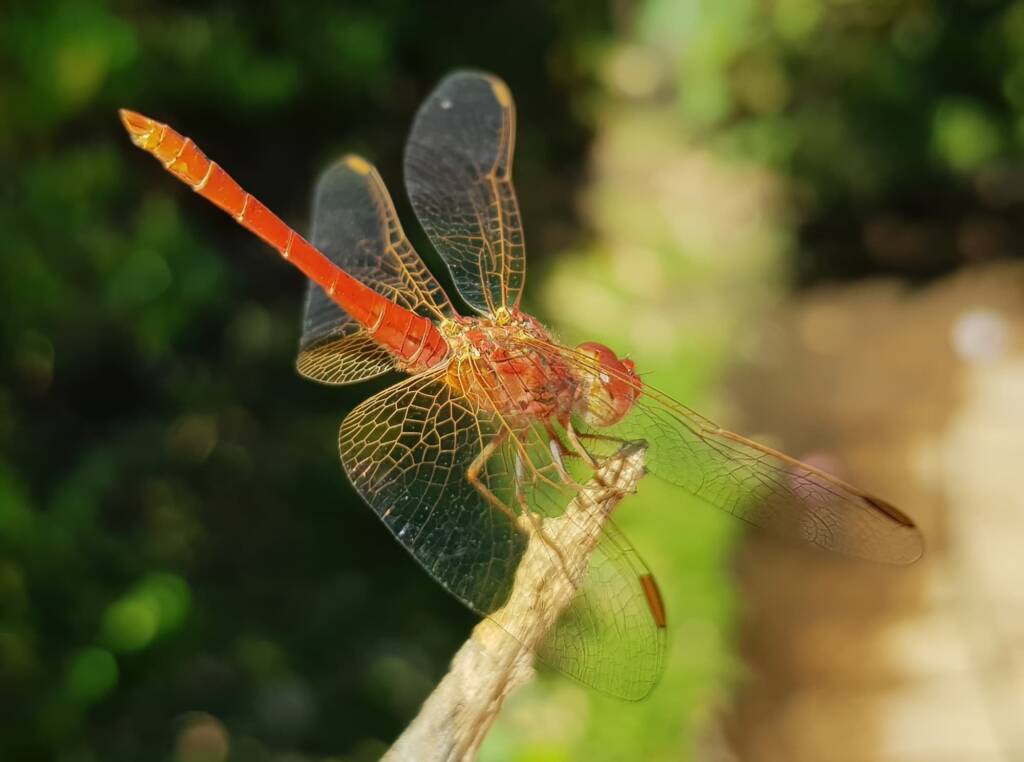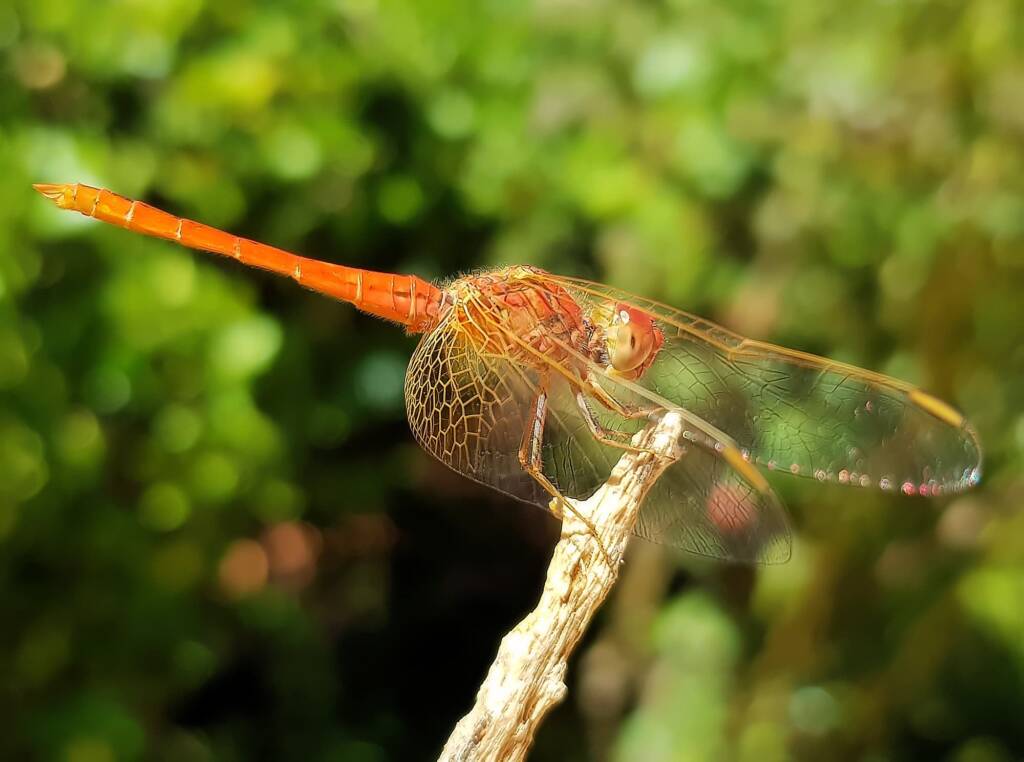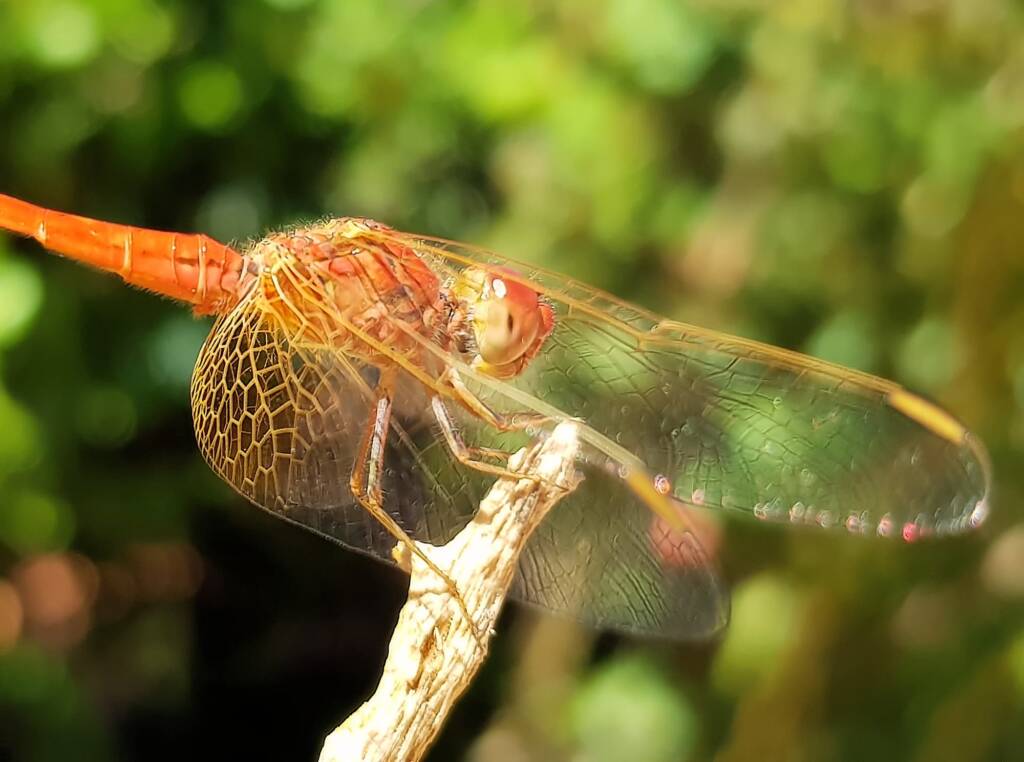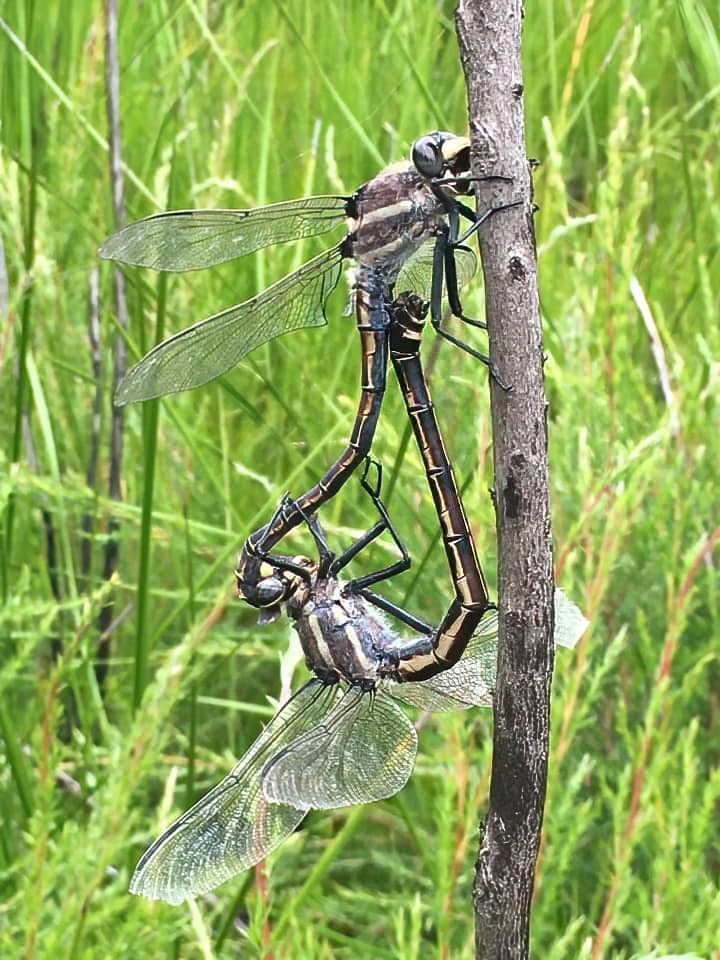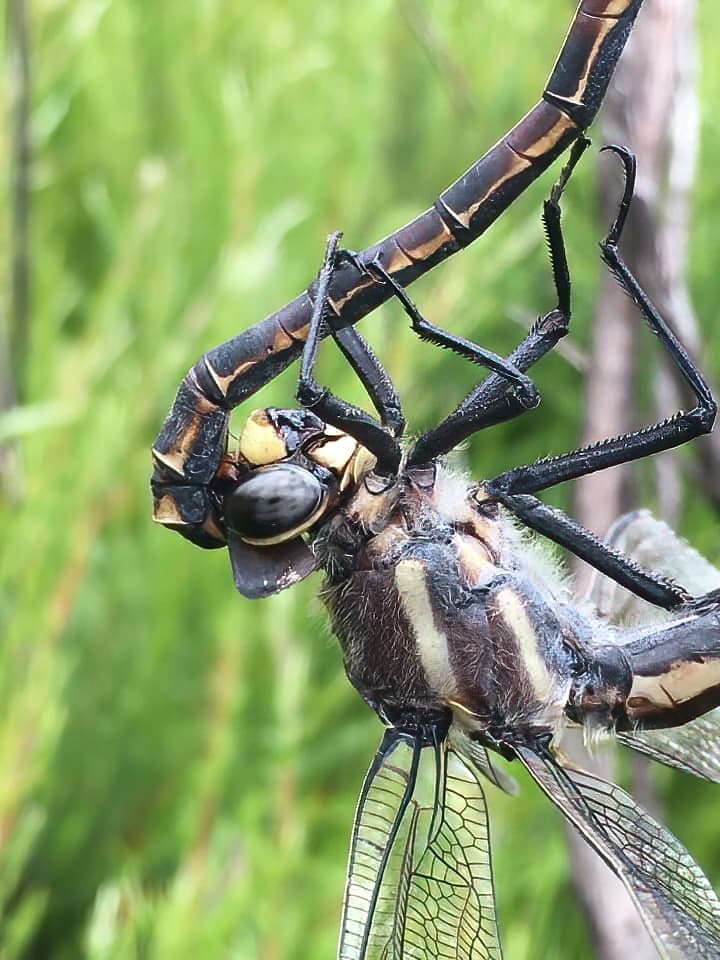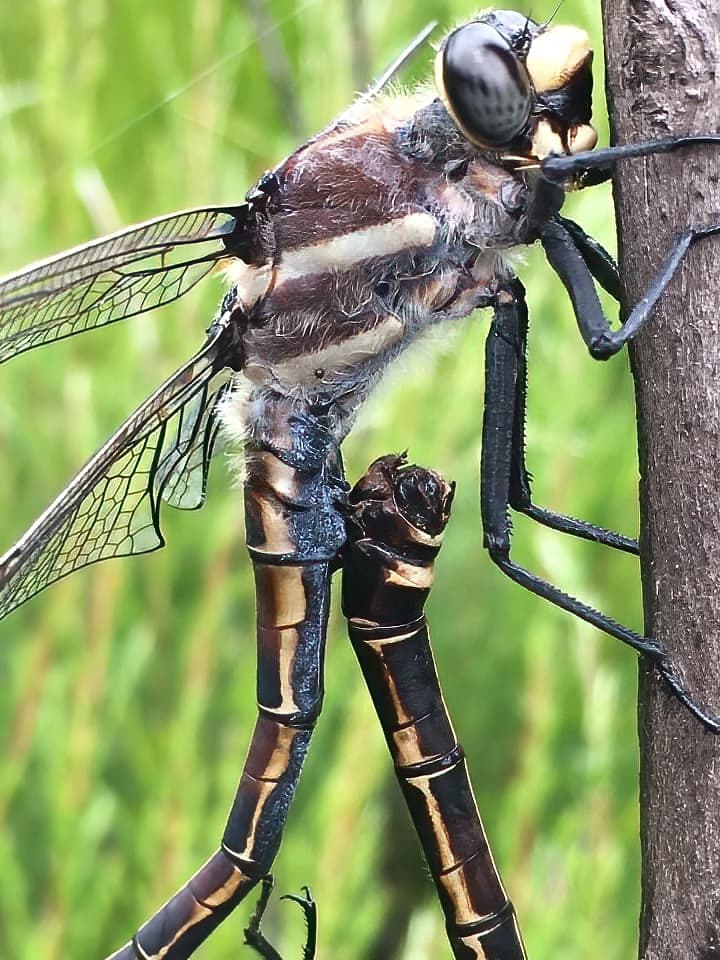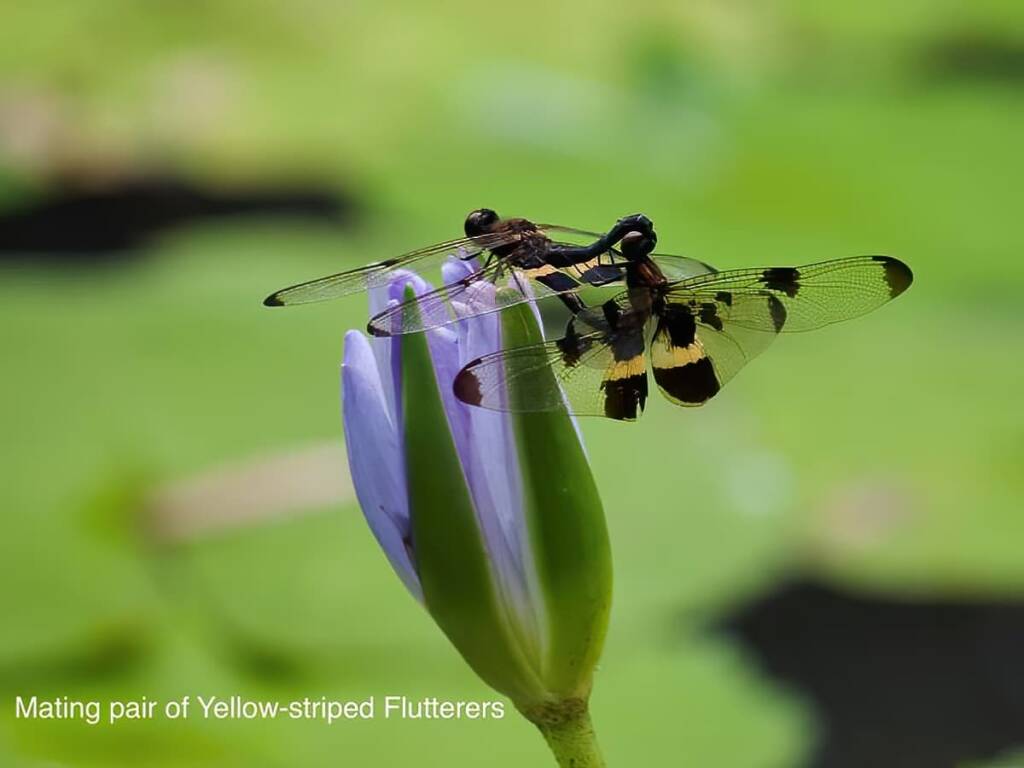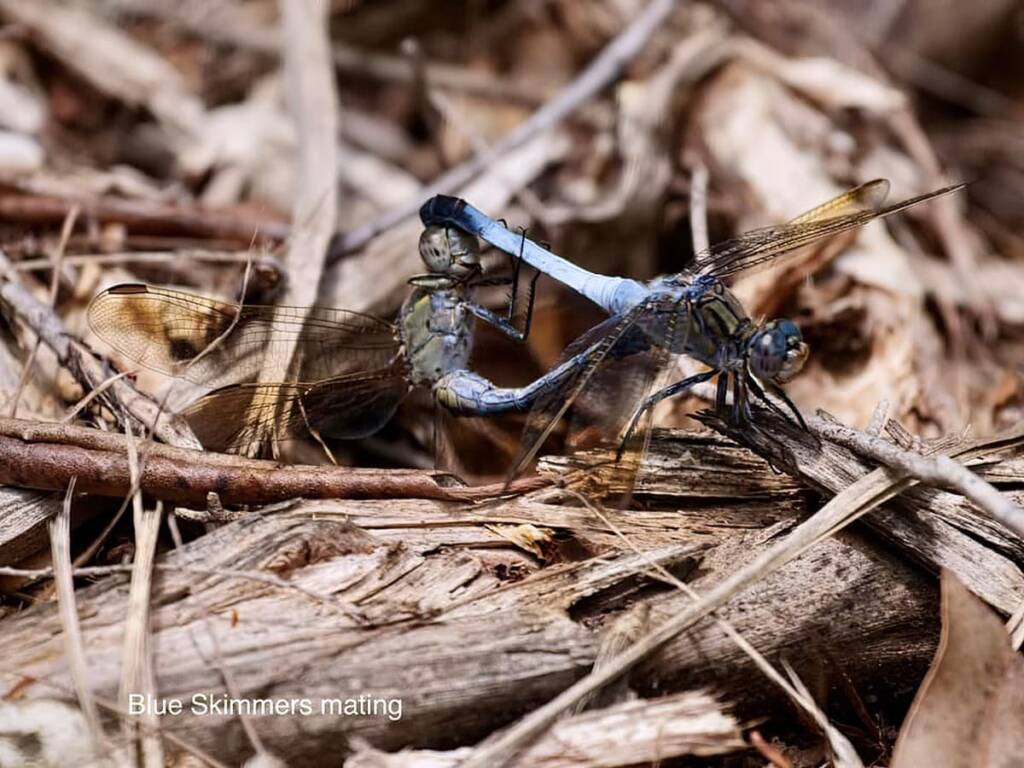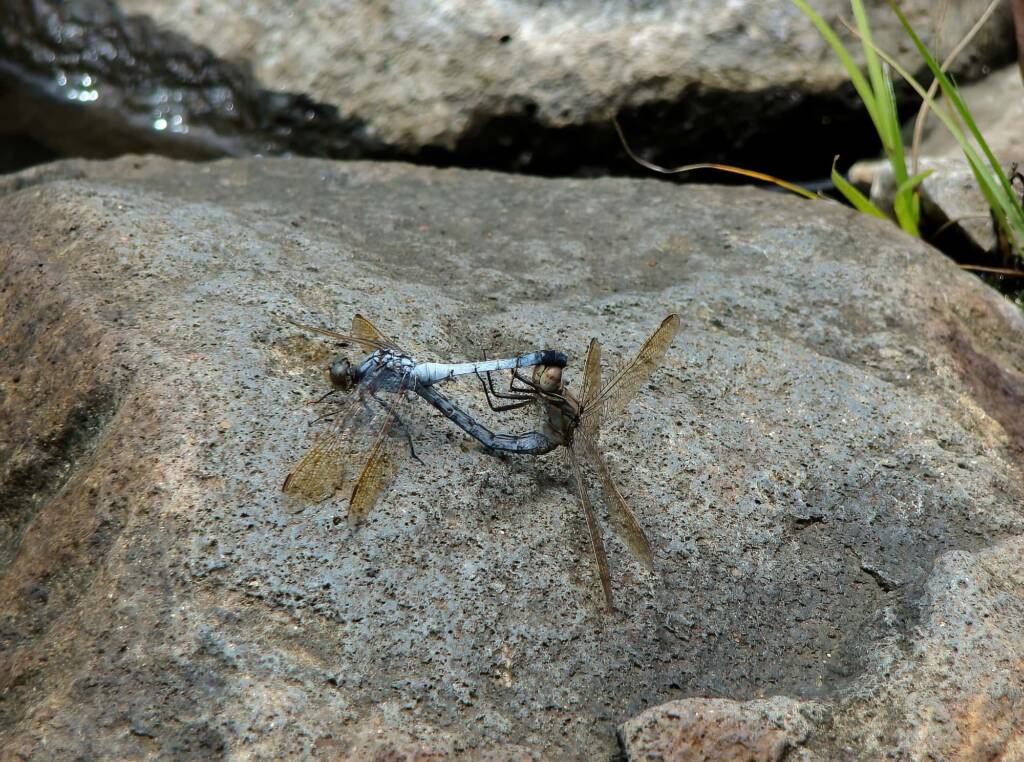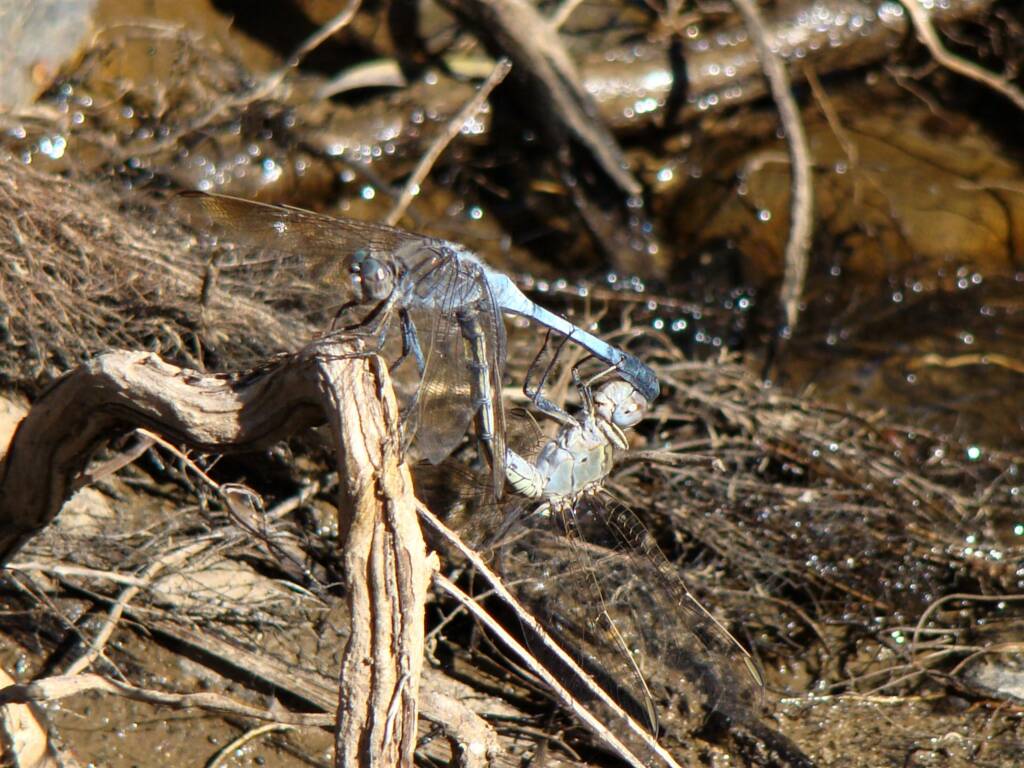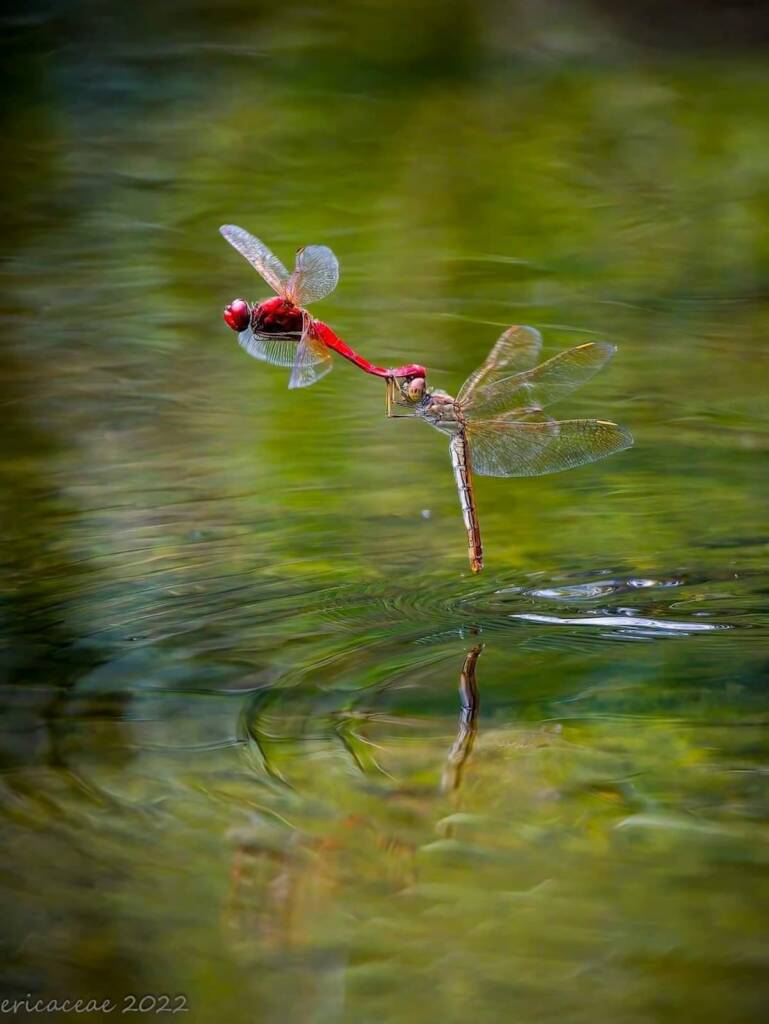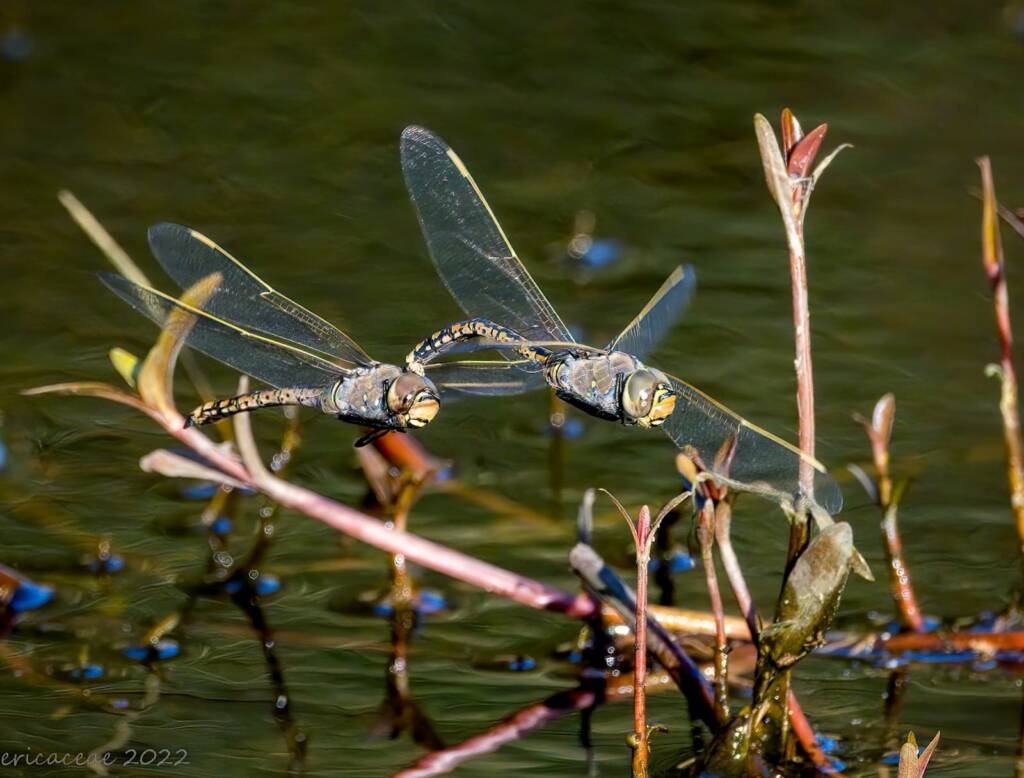Dragonflies & DamselfliesDragonfly or Damselfly? Sex Lives and Dragonflies Damselflies Diplacodes haematodes Hemicordulia tau Orthetrum caledonicum Orthetrum migratum Orthetrum villosovittatum
Have you ever wondered where the sex organs are on a dragonfly?
One of the unique features of the adult dragonflies are that both the male and female have their genitalia at the end of their abdomens. However, due to the way they mate, the male of the species have two sets of genitalia.
Wow, you might say… and if you have ever watched dragonflies, their mating can often starts as an aerobatic display, and what may seem like high speed chasing.
The way male dragonflies mate, they actually cannot use the tips of their abdomen to transfer sperm to the female dragonflies. A male dragonfly actually have to grasp the female behind the head as they mate, which means that their genitalia are not close to each other.

This is why the male dragonflies have a second set of genitalia located on the abdomen near the thorax. So before mating, the male will transfer sperm from the primary genitalia at the end of the abdomen, to the secondary genitalia near the top of the abdomen (near base of his thorax).
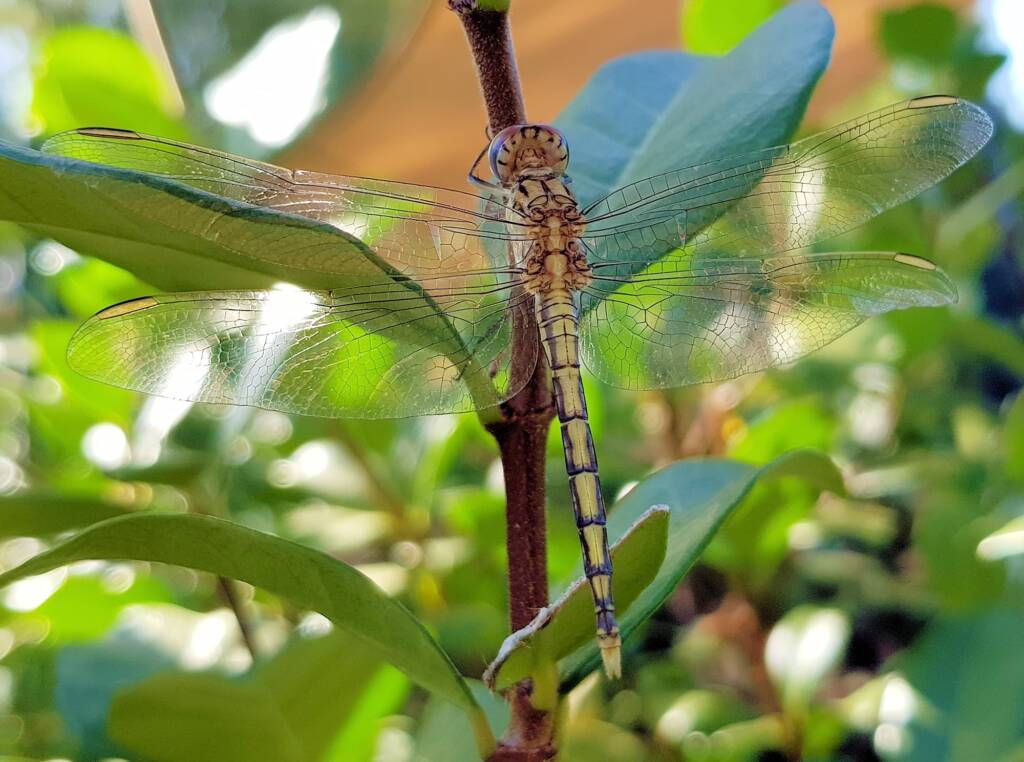
Let’s talk about sex, baby… Ok let us not get ahead of ourselves… we need to talk about those appendages thingies…
If you take a close look at the end of the long abdomen, you will see that both the female and the male dragonfly have two or three small appendages.
In the female, the pair of “superior appendages” are known as cerci (singular cercus). It is believed that the cerci in the female have little to no function.
In the following photo you can clearly see the pair of cerci on the female Blue Skimmer (Orthetrum caledonicum).
What can be confusing when identifying the sexes between between some dragonfly species, is that juveniles, immature and mature dragonfly can be different or similar colours between the sexes. In this example of the female Blue Skimmer, it is the male Blue Skimmer that is often identified with this blue colour (although in the male the blue is usually stronger in colour).
The female of this species Orthetrum caledonicum go through a number of colour changes, starting with the young female having a yellow body with dull black patterns. As the female matures, they turn brownish grey in colour. It is in the older mature female dragonflies that the colour changes to a powder blue (although not as strong a blue as the males).

In the male dragonfly, they have a pair of cerci and an epiproct (“inferior appendage”). The epiproct is a project (usually upwards) from the insect’s tenth abdominal segment. In dragonflies, specifically the males, they have a small epiproct.
In different male species of dragonflies, these appendages may be slightly different in appearance, but they have the same function… sex.
All male dragonflies have these three appendages at the end of their abdomen, that are collectively called “claspers”. Their function is to hold the female dragonflies during mating.
There is some great information on Walter Sanford’s photoblog detailing the appendages (see our Footnote & References below for the link)2.
The male dragonflies are the ones that chase the females, and when he sees a likely mate, he will often first try to approach her from behind and usually when they are both in flight. The male dragonfly will then try to grab hold of the thorax of the female dragonfly with his legs. If he is successful in grabbing her, he will pull his abdomen forward, and with his anal appendages (a pair of cerci and epiproct) clasp her by the occiput8, in layman’s terms, what we might say looks like the back of the neck.
Researching the net, there is also some variation in the terms used to describe the reproductive appendages. The Gunther Theischinger and John Hawking field guide, they used the terms epiproct and paraproct in relation to the larval forms, which may have both, but prefer to speak of superior and inferior anal appendages in relation to the adult dragonflies. Note that the adult male dragonfly has two cerci (superior anal appendages) co-acting with a single epiproct (inferior anal appendage), which may be forked close to the base.8
“Copulation begins when the mature female accepts a male, allowing him to seize her by the occiput (dragonflies) or prothorax (damselflies) with his legs and then his anal appendages (the ‘tandem’ position).”9
The Complete Field Guide to Dragonflies of Australia, authors Gunther Theischinger and John Hawking
Once the male dragonfly has the female tightly by the occiput, he will extend his body and continue flying with her, in tandem — this is sometimes referred to as tandem linkage or the tandem position.
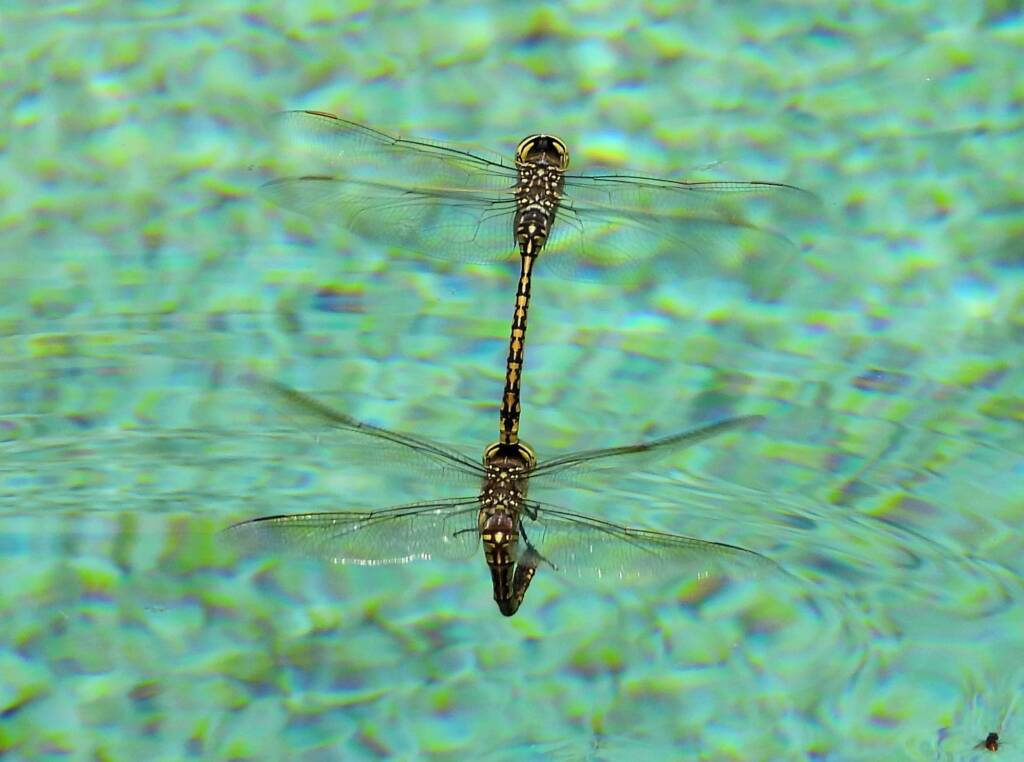
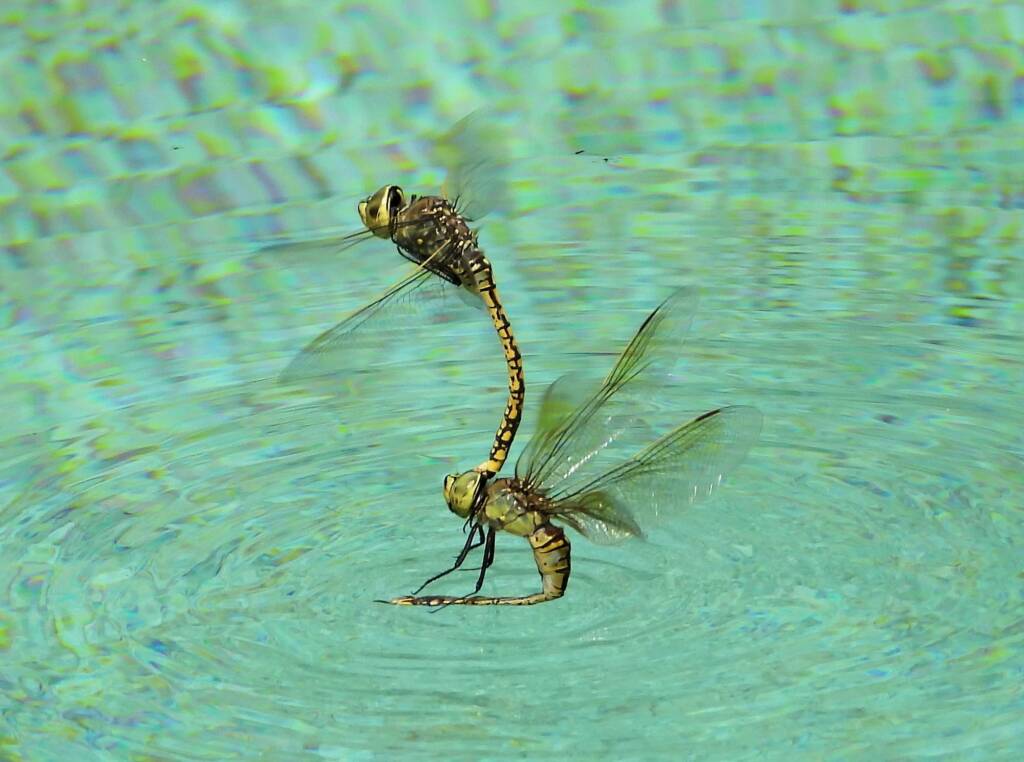
Now that he has got a hold of a mate, the male dragonfly prepares for sex.
Earlier, we mentioned that the male dragonflies have secondary sex organs, meaning they do not store sperm near the organ where it is created. The sperm which is produced at the 9th abdominal segment, is transferred to the secondary genitalia, which is located at the 2nd abdominal segment where the penis is located. Once the male has transferred the sperm, he is ready to mate.
Sorry… we do not have any photos of the male transferring his sperm between his two sets of genitalia. If you have some photos of the genitalia, we would love to include them here.
In female dragonflies, the genital opening is on the underside of the eighth segment, covered by a simple flap (vulvar lamina) or an ovipositor (depending on species and the method of egg-laying).
The female now has to bend her abdomen forward (sometimes requiring coaxing from the male), bringing her genitalia into contact with his penis (at his 2nd abdominal segment). This creates a formation referred to as a “wheel formation”, that is unique to the order Odonata.
In dragonflies, the sex organs lock together briefly, sometimes in flight, and other times in some nearby perched or ground position.
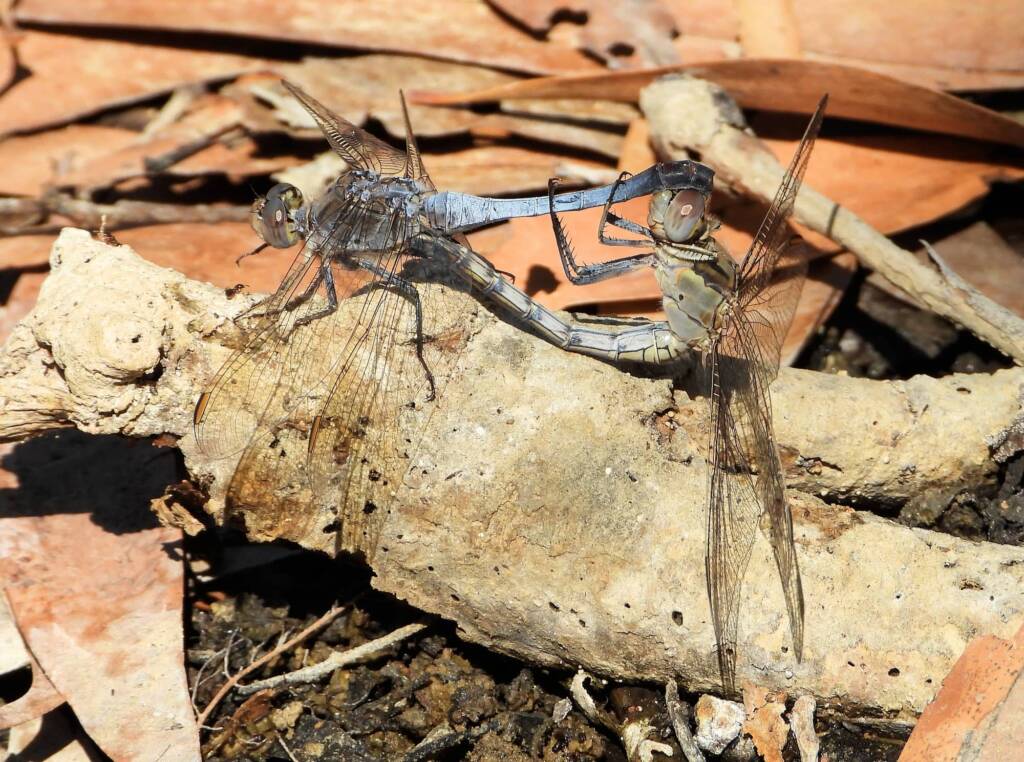
When trying to identify the sex of a dragonfly, you can also look for a bump on the underside of the abdomen near where it joins with the thorax. If there is a bump there, what you are looking at is the secondary genitalia, which means that this dragonfly is a male. However, if the underside of the dragonfly is smooth, it’s a female.
And there you have it… the sex life of the dragonflies.
There is a great photo on the Wikipedia External morphology of Odonata showing the body parts of the dragonfly (see our Footnote & References below for the link)4.
Now we know for some of us, more sex pictures are good… so enjoy… and many thanks to our contributors… and we certainly welcome more images to include here…
Pictured:
- Wandering Percher (Diplacodes bipunctata), Ransome/Brisbane QLD @ Ellen West
- Yellow-striped Flutterer Dragonfly (Rhyothemis phyllis), Ransome/Brisbane QLD @ Ellen West
- Blue Skimmer (Orthetrum caledonicum), Ransome/Brisbane QLD @ Ellen West
- Blue Skimmer (Orthetrum caledonicum), Mareeba, FNQ QLD @ Sheena Shepherd
- Rosy Skimmers (Orthertum migratum), Mareeba, FNQ QLD @ Sheena Shepherd
- Blue Skimmer (Orthetrum caledonicum), Karma Waters Stn, FNQ QLD @ Sheena Shepherd
Pictured:
- Scarlet Perchers (Diplacodes haematodes), copulating and dropping eggs into the water at this pond in Peakhurst NSW © Ericaceae Photography
- Female Scarlet Percher (Diplacodes haematodes) hanging on to her mate – Peakhurst NSW © Ericaceae Photography
- A pair of dragonflies (Hemianax papuensis) mating and dropping eggs. Little do they know this pond is destined to dry up (but might not if La Nina persists this summer). Penshurst NSW. Hemianax papuensis (Anax to some) – specialist in temporary waters with rapid larval development … thank you Richard Rowe © Ericaceae Photography
- A pair of dragonflies (Hemianax papuensis) mating and dropping eggs © Ericaceae Photography
This page is currently in development…
- Scientific classification
- Kingdom: Animalia
- Phylum: Arthropoda
- Subphylum: Hexapoda
- Class: Insecta
- Informal: Pterygotes
- Order: Odonata
- Suborders:
- Anisoptera
Footnote & References
- Why Dragonflies Are the Best Insects (The Dragonfly Trilogy, Part One), by Dragonflywoman, 30 December 2009, The Dragonfly Woman, https://thedragonflywoman.com/2009/12/30/dragonfliesrule/
- Dragonfly terminal appendages (male, female), Walter Sanford, walter sanford’s photoblog, https://waltersanford.wordpress.com/2015/03/12/terminal-appendages-male-female/
- How Dragonflies Mate, by Debbie Hadley, 26 June 2019, ThoughtCo., https://www.thoughtco.com/how-dragonflies-mate-1968255
- External morphology of Odonata, https://en.wikipedia.org/wiki/External_morphology_of_Odonata (last visited Nov. 3, 2022).
- Dragonfly, https://en.wikipedia.org/wiki/Dragonfly (last visited Nov. 3, 2022).
- Cercus, https://en.wikipedia.org/wiki/Cercus (last visited Nov. 4, 2022).
- Australian Dragonflies and Damselflies, Facebook group, https://www.facebook.com/groups/Ozdragonflies/
- Special mention to Ros Coy and Jeff Melvaine (members of Australian Dragonflies and Damselflies, Facebook group) for correction and additional information.
- Thanks to Chris Burwell for confirmation of ID of dragonfly, Australian Dragonflies and Damselflies, Facebook group, https://www.facebook.com/groups/Ozdragonflies/
- The Complete Field Guide to Dragonflies of Australia, authors Gunther Theischinger and John Hawking, Publisher CSIRO Publishing, ISBN 0 643 09073 8
- Dragonflies Mating and Reproduction, Brisbane Insects and Spiders, https://www.brisbaneinsects.com/brisbane_insects/Mating.htm
- Ericaceae Photography, Facebook, https://www.facebook.com/profile.php?id=100075090360388
Dragonflies & DamselfliesDragonfly or Damselfly? Sex Lives and Dragonflies Damselflies Diplacodes haematodes Hemicordulia tau Orthetrum caledonicum Orthetrum migratum Orthetrum villosovittatum
InsectsBees Beetles Blattodea Butterflies Coleoptera Cicada Crabronidae Diptera Dragonflies & Damselflies Formicidae Hemiptera Heteroptera (True Bugs) Mango Planthopper Moths Orthoptera Orthopteroid Processionary Caterpillar Stink Bugs, Shield Bugs and Allies Syrphidae Wasps Water Scorpion (Laccotrephes tristis) Witchetty Grub

